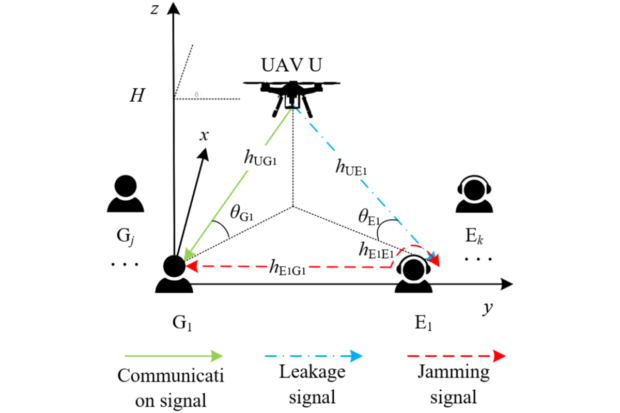Scientists at the College of Computer Science and Cyber Security, Chengdu University of Technology, Chengdu and the National Key Laboratory of Science and Technology on Information System Security, Beijing, China have just published a paper entitled ‘Safeguarding UAV Networks against Active Eavesdropping: An Elevation Angle-Distance Trade-Off for Secrecy Enhancement‘.
Abstract
Because of their low expense and ease of rapid deployment, unmanned aerial vehicles (UAVs) are frequently applied in wireless networks. Although the wireless channel is able to broadcast, legitimate communications between UAVs and ground nodes are incredibly susceptible to severe security threats, such as malicious jamming and eavesdropping.
Compared with the traditional line-of-sight channel (LC) model, the probabilistic LC (PrLC) model can better describe the practical channel conditions of UAV-to-ground transmission in city areas. Therefore, this paper considers the UAV-enabled networks under the PrLC model in complex city environments.
Specifically, when the UAV transmits classified messages to legitimate ground nodes, multiple active eavesdroppers simultaneously eavesdrop on the transmitted confidential information to interfere with the signal and limit the legal transmission. We jointly optimize the communication connection, the three-dimensional (3D) UAV trajectory, and the transmit power of the UAV to increase the average secrecy rate for the worst condition.
Because the problem is non-convex, the best solution is formidable to get, this paper designs an iterative algorithm and use the successive convex approximation (SCA) technique to solve it. Compared to other benchmarks, our proposed algorithm, as demonstrated by numerical results, can effectively balance the elevation angle-distance trade-off to improve secrecy rate performance.
The complete document can be accessed here.
Source: MDPI

